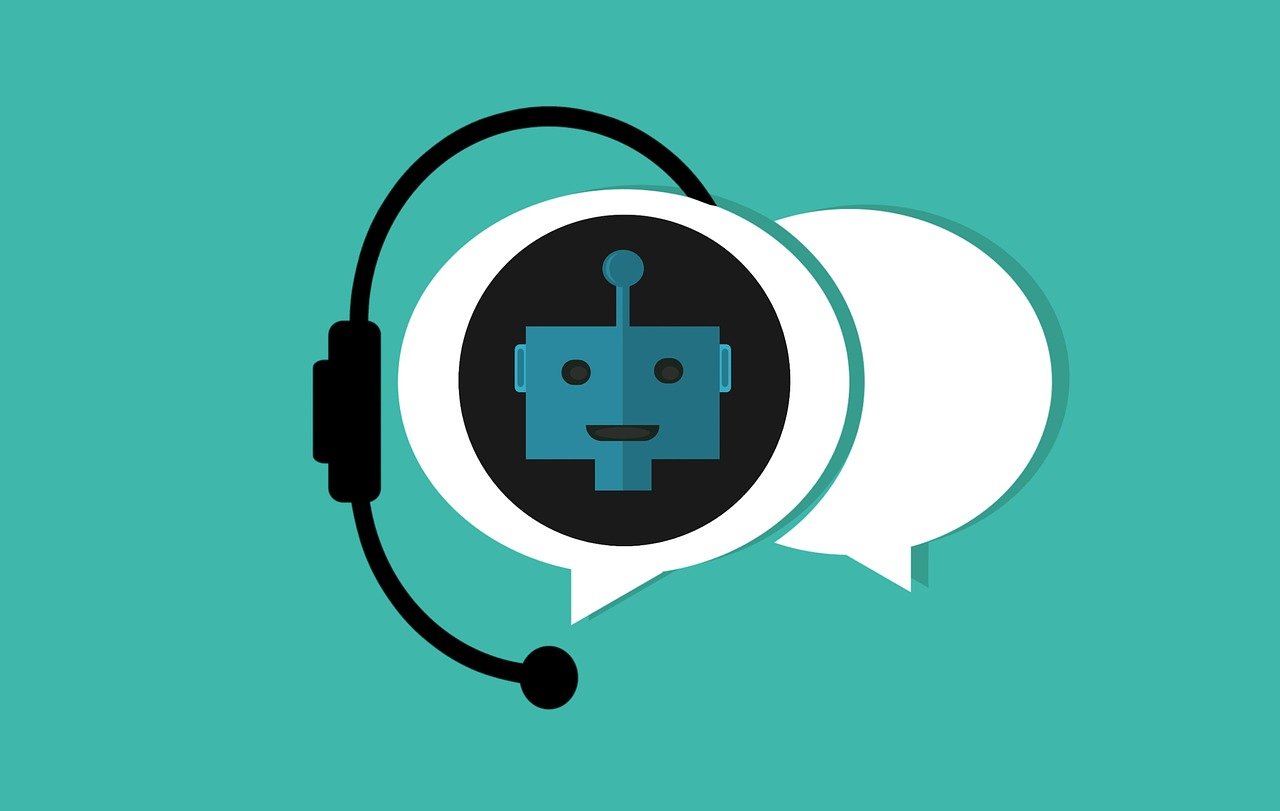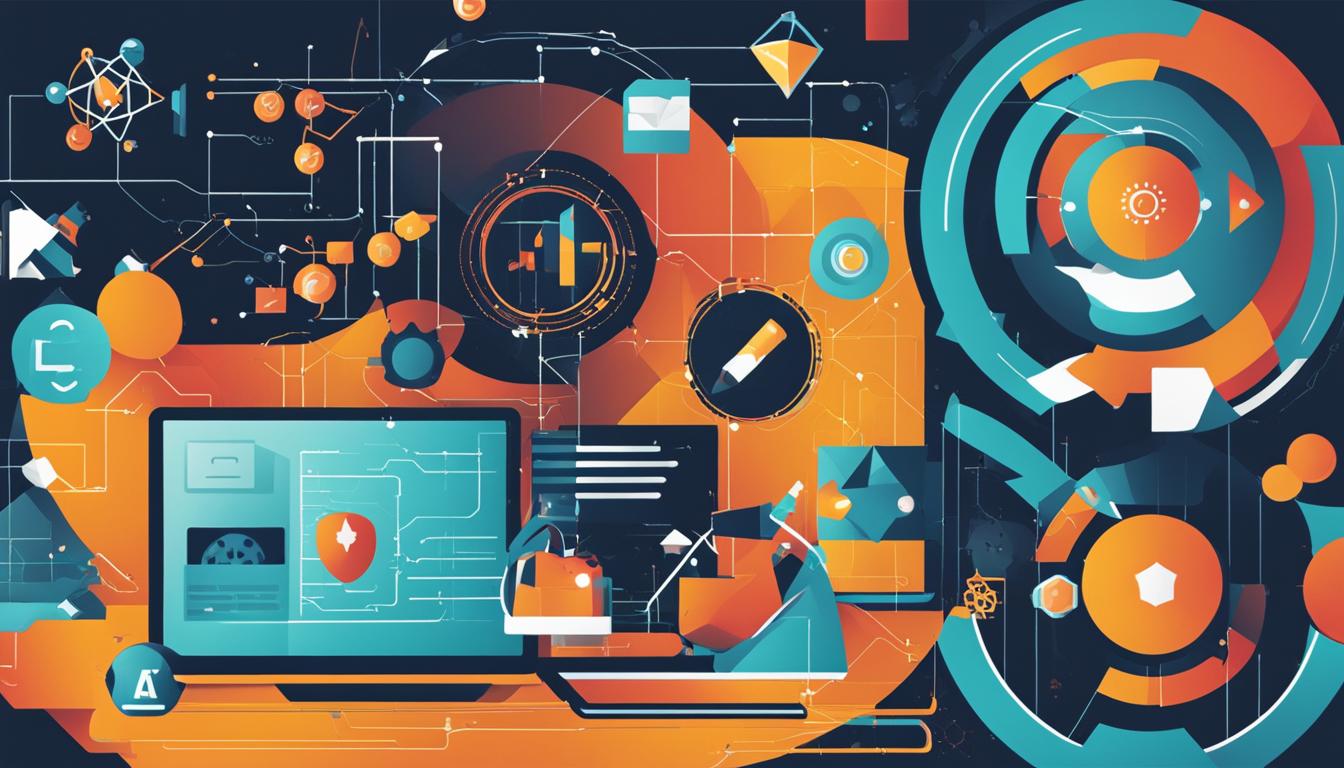The Adventurous Tale of Chatbots: A Brief History
In the cascading chronicles of technological innovation, the chapter on chatbots is relatively fresh, yet undeniably impactful. It all began in the early-1960s with ELIZA, a rudimentary program created by Joseph Weizenbaum at MIT.
This proto-chatbot was designed to mimic a Rogerian psychotherapist and could carry on conversations using pre-determined scripts. Despite its simplicity, ELIZA managed to captivate audiences and give them a tantalizing glimpse into a future where machines could chat like humans.
Fast-forwarding to the 21st century, we see bots becoming progressively complex and sophisticated. In 2001 came ALICE (Artificial Linguistic Internet Computer Entity), an award-winning bot that could simulate human conversation based on heuristic pattern matching techniques.
Then came IBM’s Watson in 2010 that outperformed human competitors in Jeopardy! More recently, thanks to advancements in artificial intelligence and machine learning techniques, we’ve seen chatbots become capable of delivering personalized experiences, understanding nuanced language patterns and even learning from past interactions – revolutionizing customer service sectors around the globe.
Nailing Down The Basics: What Exactly Is A Chatbot?
In essence, a chatbot is a software application used for conducting an online chat conversation without or with limited human intervention. It sounds simple enough when put like this but there’s actually an impressive amount of technology beneath this seemingly straightforward concept.
Chatbots have evolved beyond mere text-based interactions; many modern bots integrate voice recognition capabilities akin to virtual assistants such as Amazon’s Alexa or Apple’s Siri. Primarily these digital entities are utilized for automating tasks that don’t require human intervention – think booking appointments or answering frequently asked questions about a business’s products or services.
Their main aim is to improve user experience by offering personalized, immediate responses – all the while reducing operational costs for businesses by handling large volumes of queries. The duality of chatbots being both user-friendly and cost-effective makes them an indispensable asset in today’s digital era.
Delving Into the Binary Divide: AI-driven vs Scripted
Chatbots have evolved from rudimentary text-based interfaces to sophisticated conversational agents that almost simulate human-like interaction. Fundamentally, chatbots are of two main types: AI-driven and scripted. While the former employs advanced artificial intelligence techniques to create dynamic conversations, the latter relies on predefined scripts or responses to interact with users.
AI-driven bots leverage machine learning and natural language processing (NLP) to understand user intent and generate appropriate responses, thereby providing a more conversational feel. They learn from every interaction and improve their responses over time.
Conversely, scripted bots follow a fixed decision tree structure with preset paths for conversation navigation. Their interactions are based on specific keywords in user inputs, limiting their capacities for complex dialogues.
Unleashing Potential: Common Uses of AI-driven & Scripted Bots
Both AI-powered and scripted bots have found significant applications across various sectors due to their diverse capabilities. Businesses frequently employ them for customer support services, where these bots handle queries round-the-clock with unwavering consistency.
They excel in tasks ranging from booking appointments, placing orders, guiding users through websites or applications to resolving common problems. However, the degree of complexity they can handle varies significantly between these two types.
While an AI-driven bot might be deployed for high-level tasks such as providing personalized recommendations or managing intricate customer complaints effectively; a simple scripted bot would be ideal for linear tasks like guiding a user through form fill-ups or addressing FAQs that don’t require multi-faceted understanding. With both chatbot types playing crucial roles in enhancing customer experience and business productivity alike, it becomes imperative we delve deeper into understanding their individual structures and functionalities.
Understanding Scripted Chatbots: A Peek Under the Hood
Before we traverse into the labyrinthine intricacies of scripted chatbots, let’s establish a solid foundation by deciphering what they are. Scripted bots, also known as rule-based bots, are built to follow pre-established norms or ‘scripts’.
They respond based on a set of predetermined rules and pathways, making their responses highly predictable and consistent. The beauty of these digital entities is that they’re programmed for specific interactions.
Think of them as diligent clerks with an impeccable memory of their one script – they never falter from it. However, this steadfast adherence to rules is both their strength and weakness, which brings us to our next topic.
The Nuts and Bolts: The Modus Operandi of Scripted Bots
A scripted bot operates akin to a student who has crammed for an exam – it knows exactly what it needs to say when presented with specific requests or phrases. Behind the scenes, these bots use decision tree models, where every potential user response is anticipated and coded for in advance.
Let’s take an example: if you’ve ever visited a website that immediately offers help via a chatbot asking predefined questions like “How can I assist you today?” followed by options such as “Product inquiries”, “Technical issues”, or “Order status”, then congratulations! You’ve interacted with a scripted bot.
Weighing Up Scripted Chatbots: The Pros and Cons
The foremost advantage of scripted chatbots lies in their simplicity. Their design is straightforward because they follow programmed scripts. This fundamental characteristic makes them quick learners due to their limited scope but also traps them within the confines of rigid functionality.
On the flip side, despite being perfectly capable in handling simple, linear interactions, scripted bots falter when they encounter complex or unexpected queries. They are incapable of processing responses outside their programmed ambit, making them less flexible compared to their AI-driven counterparts.
Simplicity in Design, Yet Limited Capabilities
Imagine having a map with only one route between each destination – no side roads or shortcuts. This metaphor aptly describes the functioning of scripted chatbots. They follow a predetermined path and any deviation from it leaves them floundering.
Their narrow capacity limits the complexity and depth of the tasks they can perform. However, their simplicity is also an advantage in terms of affordability and predictability – making them an ideal choice for businesses with straightforward customer service needs.
Perfect for Specific Tasks but Stumbles Over Complex Queries
A scripted bot shines when performing specific tasks that lie within its programmed realm. If you need a bot to perform straightforward duties such as booking appointments, answering FAQs or checking product availability, these rule-abiding entities will serve you well.
However, when asked to handle intricate conversations or unanticipated user queries outside their script boundaries, they struggle. The inability to comprehend query nuances can often lead to repetitive responses or even wrong information altogether – potentially leading to frustrated users and missed opportunities for businesses.
Exploring AI-Driven Chatbots
The Sophisticated Machinery: Unraveling the Functionality of an AI-Driven Chatbot
In the fascinating universe of chatbots, AI-driven variants stand out like digital scholars brimming with potential. They embody the amalgamation of machine learning, natural language processing, and cognitive computing.
Unlike their scripted counterparts that adhere to a predetermined conversational path, these luminaries dazzle with a dynamic talk track powered by artificial intelligence. AI-driven chatbots learn from past interactions, augmenting their knowledge base continuously.
Their responses aren’t limited to prewritten scripts; they analyze user inputs using complex algorithms and generate appropriate answers in real-time. This often results in more natural-sounding conversations which can adapt as per user responses.
The Double-edged Sword: Advantages and Disadvantages of AI Bots
The most compelling advantage of AI chatbots is their virtually unlimited potential for learning and improvement. They can handle a wide array of queries, even ones that they haven’t been explicitly programmed for.
In addition to this versatility, they offer personalized interactions by remembering user details from previous conversations—a feature that can significantly enhance customer experiences. However, despite boasting such impressive attributes, these technological marvels come with their own set of limitations.
The resources needed to develop an effective AI bot—both financial and intellectual—are substantial compared to scripted bots. The development process involves extensive data training to ensure the bot learns effectively.
Boundless Possibilities yet Resource Intensive:
AI-driven chatbots are like diamonds in the rough; they harbor boundless possibilities but require significant polishing before they can truly shine! With every interaction analyzed and learned from meticulously, these bots evolve continually becoming smarter over time—a feature absent in traditional scripted bots. However, this constant evolution is directly proportional to resource investment—both in terms of time and money.
Unlike scripted bots, which follow a ‘set it and forget it’ approach, AI-driven bots require continuous tweaking and adjustments for optimal performance. This extensive development process, while promising exponential benefits in efficiency and customer satisfaction in the long run, can be resource-taxing initially.
AI Driven chatbots: The Learning Machines with Unpredictable Outputs
Another remarkable attribute of AI-driven chatbots is their aptitude for learning. They are not rigidly confined to pre-set responses but have the ability to learn from every interaction they encounter.
This dynamic learning process enables them to provide highly personalized customer experiences—an invaluable asset in today’s digital landscape where personalization is key. A possible fly in the ointment however, is the potential unpredictability of these bots.
Since they don’t strictly adhere to scripts, there’s always a chance that they might generate incorrect or inappropriate responses occasionally. While this doesn’t detract from their overall prowess, it does highlight an important consideration when choosing between scripted and AI-driven bots for your business needs.
Comparing Apples to Oranges: Scripted vs AI-Driven Chatbots
Pennies and Pounds: The Cost Factor in Bots
To begin, let’s talk money. Scripted chatbots are less expensive to develop and maintain when compared to their AI-driven counterparts.
Their design is straightforward and based on pre-defined rules, which do not require extensive resources or a high level of technical expertise. However, this simplicity comes with a catch – their limited capabilities might necessitate additional human resources for complex queries that the bot can’t handle.
On the other hand, developing an AI-driven chatbot is akin to raising a child; it requires substantial investment of time, effort, and funds. AI bots require continuous learning and adjustments for refining their performance.
Maintenance cost also shoot up due to the need for regular data updates and fine-tuning algorithms. However, once developed properly, they can handle more complex tasks with ease.
The Efficiency Equation: Who Addresses Queries Better?
When it comes to handling customer queries with efficiency, both types of bots show varying levels of prowess. Scripted chatbots are like efficient assembly line workers; they perform specific tasks impeccably well without any deviation from the script – quickly addressing FAQs or guiding users through standard procedures.
However, when faced with unique or complex questions outside their programming purview, scripted bots falter. They aren’t equipped to understand diverse user inputs or provide personalized responses.
In stark contrast stands the AI-driven bot – much like an accomplished detective – capable of dissecting intricate queries through its natural language processing abilities. By understanding context and learning from past interactions, these bots offer personalized solutions that scripted bots simply can’t match.
Reliability Revisited: Consistency Counts
Scripted chatbots take the cake when it comes to reliability in delivering consistent responses since they are essentially rule-followers, sticking religiously to their programming code. This results in predictable and error-free outputs but also lends a mechanical flavor to the interaction. AI-driven chatbots, with their ability to learn and adapt, strive for a more human-like interaction.
This brings in an element of unpredictability. At times, they may provide brilliant insights but there’s always that slight possibility of them making surprising errors, especially in the early stages of their learning journey.
Both types of bots have their unique strengths and challenges – while scripted bots excel in cost-effectiveness, simplicity and reliability; AI-bots shine in areas of complexity handling and customization. Your choice should be dictated by your business requirements and budget constraints.
Case Studies: The Triumphs of Technology
The Unsung Heroes: Scripted Bots In Spotlight
The e-commerce industry has been one of the early adopters of chatbots, with scripted bots playing a pivotal part in their success. Amazon’s automated service bot, for instance, enables customers to track orders, provides information about products and answers frequently asked questions – all without human intervention.
It functions seamlessly due to predefined scripts designed for specific customer queries. Another impressive example is the weather forecasting bot by Weather Unlocked.
Functioning as a scripted bot, it delivers accurate forecasts based on user-provided locations and desired timescales. Its ability to provide immediate responses using preset scripts has made it an invaluable tool in providing real-time weather updates.
Stealing The Limelight: AI-driven Bots That Made A Splash
When it comes to artificial intelligence driving chatbots, Cleo springs readily to mind. As an AI-powered financial assistant, Cleo engages with users conversationally while helping them manage their finances effectively. She learns from each interaction and constantly refines her responses – a testament to the machine learning component intrinsic in AI-driven bots.
Likewise, Google’s Duplex has taken customer service automation to new heights with its remarkable ability to make reservations on behalf of users by engaging with businesses naturally over phone calls. Duplex’s uncanny ability not just to understand human speech but also mimic its nuances showcases the spectacular feats that AI-driven chatbots can achieve when let loose from their coded confines.
The Evolution of Scripted Bots: Simplicity Meets Innovation
As we peer into the future of chatbots, it appears that scripted bots will retain a firm foothold in certain niches. Yes, their responses might be pre-programmed and their capabilities limited compared to their AI-powered counterparts, but they provide a level of control and predictability that some businesses still find desirable.
I envision these bots becoming increasingly sophisticated, with enhanced branching capabilities to tackle complex requests without losing the predictability factor. In a world where user experience is paramount, I foresee scripted bots becoming more ‘human-like’ in their interactions.
They’ll go beyond just text-based conversations to incorporate rich media like images, GIFs, emojis and even audio-video elements for an enriched user experience. So don’t write off these stalwarts yet; they may well surprise us!
AI-Driven Bots: Unleashing Unprecedented Potential
On the other side of the spectrum lie our AI-driven chatbots who are destined for grandeur! Artificial Intelligence is progressing at an astounding pace, enabling chatbots to understand and respond to user queries more accurately than ever before.
With advancements in Natural Language Processing (NLP) and Machine Learning algorithms, we can expect AI chatbots to handle even more complex conversations with aplomb. The next frontier?
Emotional intelligence! Futurists predict that AI-chatbots will soon be capable of recognizing human emotions through sentiment analysis and adapt their responses accordingly – imagine a customer service bot consoling you about a late delivery!
Furthermore, integration with IoT devices could see our AI-bots turning into personal assistants managing not just digital tasks but physical ones too – think ordering groceries or scheduling appointments. The possibilities seem endless for these intelligent virtual beings.
In short, while scripted bots continue honing their strengths, their AI-driven counterparts are set out to redefine the entire chatbot game. Exciting times ahead in the bot world!
Deciphering the Right Bot for Your Venture
In the ever-evolving cosmos of technology, making the choice between AI-driven and scripted chatbots might seem like a conundrum wrapped in an enigma. But with a touch of insight and clarity, you can make an informed decision that aligns perfectly with your business needs.
The initial consideration should be the nature and complexity of tasks you expect your chatbot to handle. If your operations necessitate basic, predefined responses to common queries, a scripted bot would serve you just fine.
However, if your business thrives on handling intricate customer interactions and providing personalized experiences, investing in an AI-driven bot could be worth every penny. The second aspect worth pondering is resource allocation.
Scripted bots are relatively inexpensive to develop and maintain but have their limitations in functionality. On the flip side, AI chatbots require more resources initially but have immense potential for growth and adaptability as they learn from every interaction.
Navigating Towards Progress: Final Musings
Ultimately, selecting a chatbot isn’t merely about choosing between two types; it’s about finding a solution that augments and complements your business processes seamlessly. It’s crucial to assess not only where your venture stands today but also envisage where it might find itself tomorrow.
In this digital epoch marked by ceaseless innovation, staying adaptable is key: Today’s cutting-edge tech might become obsolete tomorrow while today’s basic software could evolve into something extraordinary. From this vantage point, both types of chatbots hold promise—the steadfast reliability of scripted bots or the untapped potential offered by AI-driven ones.
Conclusion
Selecting between AI-driven and scripted chatbots is not a decision to be taken lightly—it requires careful evaluation of both immediate needs and future goals. Whether you lean towards simplicity or embrace complexity will ultimately shape your choice.
But no matter which path you choose, rest assured that integrating chatbots is a forward-looking move, a promising journey towards improved customer interaction and business efficiency. Embrace the change with optimism, for the future of technology is not just about competition but limitless collaboration and innovation.



